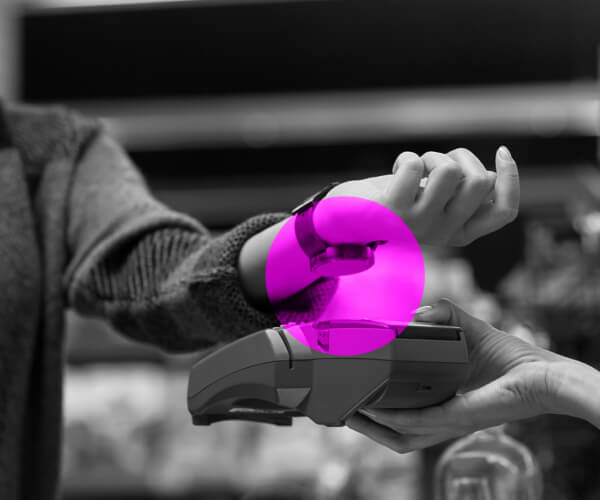Since 1854, the average length of a US recession is 17 months; however, since 1945/World War II, approximately 10 months (per Forbes) – and the last recession just 3 months (Feb – April 2020) even though the COVID pandemic lockdowns lasted much longer. Certainly easier said than living through recessionary times, but on some level, society is getting better at managing the turmoil.
As the digital-first global experts with over five decades of experience understanding human behavior, clients have been coming to Behaviorally to provide perspective on how brands can weather the latest uncertain economic climate driven by issues with supply chain, product availability, and inflation.
At this moment, the annual inflation rates in the US and 19 European countries reported an increase of 9.1%. Food and alcohol have risen over an annual rate of more than 10%. In the US, groceries have soared 13.1% in the past 12 months, which is the largest increase since 1979.
So, what are brands to do during this time? Here are some guidelines to weather this storm:
Don’t Abandon Your Strategy
Brands should review their plans (frankly, they should always keep the appropriate pulse) and adapt, but not make a complete shift unless it is completely necessary. The innovation pipeline takes time (often longer than the average recession length), and a short-term deviation could have long term ramifications. Prioritize forward progress, sometimes small steps in the right direction are enough to keep initiatives alive. Taking a long pause to “see what happens”, especially in today’s competitive market, could be enough to kill a project.
Be Empathetic to Your Customers
While assessing your strategy, take the time to understand what aspects might impact longer term shopper behavior. Rarely do consumers go backwards – at minimum learning from new opportunities only considered because of challenging times.
 Earlier this year as gas prices increased, consumers were making fewer trips in-store versus online, at times buying more items in a single trip. The make-up of the basket shifted as well, with Walmart reporting shoppers trading down to private label and other alternatives to save on total spend. MediaPost reported 7 consecutive months of store brands gaining revenue with private label brands jumping 11.6% in dollar sales in July.
Earlier this year as gas prices increased, consumers were making fewer trips in-store versus online, at times buying more items in a single trip. The make-up of the basket shifted as well, with Walmart reporting shoppers trading down to private label and other alternatives to save on total spend. MediaPost reported 7 consecutive months of store brands gaining revenue with private label brands jumping 11.6% in dollar sales in July.
Conversely, supply chain issues and limited availability of products caused online shopping baskets to be smaller than if they were shopping in person. Progressive Grocer reported that grocers lost $11 billion in sales in the first half of 2022 because of supply chain challenges and products not being properly substituted by e-commerce personal shoppers.
Numerous factors will impact the customers along their shopper journey and by understanding the moments in which your brand can influence their choice will help overcome the barriers.
Shift the Narrative
During lockdown, food delivery services such as Grab surged in revenues. However, recently, Grab has seen a dramatic drop with shares dropping 16% in the US alone. With restrictions removed, diners are saving on delivery fees and dining out for hopefully a more pleasurable experience.
 Some brands flourished during the recent lockdown as consumers ate at home more and experimented more with cooking. When brands posted new recipes to try online showcasing their products, they were more successful over their competition. One prime example was how Knorr bouillon cubes appeared in an online search for “How to clean mussels”. Now is the time to over communicate and provide shoppers a reason and benefit in choosing your product/brand. Consumers are cautious during these times, and conveying trust around brand enjoyment that ultimately limits risk (e.g. wasted spend/lack of value) can be a powerful message.
Some brands flourished during the recent lockdown as consumers ate at home more and experimented more with cooking. When brands posted new recipes to try online showcasing their products, they were more successful over their competition. One prime example was how Knorr bouillon cubes appeared in an online search for “How to clean mussels”. Now is the time to over communicate and provide shoppers a reason and benefit in choosing your product/brand. Consumers are cautious during these times, and conveying trust around brand enjoyment that ultimately limits risk (e.g. wasted spend/lack of value) can be a powerful message.
Brainstorm Quick Fixes
Work across teams to suggest creative yet rapid, agile, easy, and cost-effective solutions that may help the brand be Seen, Shoppable, Seductive, and therefore, Selected both online and in-store. This may include updating point-of-sale materials, adding temporary violators and claims to packaging to highlight benefits to consumers (read our blog on how to design and implement temporary violators on pack here), and to utilize social media to communicate directly with your consumers. Technology has provided so many ways for brands and consumers to interact.
As the leading global digital-first insights partner, we understand that these times are troubling. We’re here to help brands own the most important moment in marketing: when a sales transaction occurs. Contact us today with your business questions and we’ll help you succeed during these uncertain times!
THE AUTHORS
 Scott Brill is the Managing Director of the US business for Behaviorally, bringing together the company’s full AI technology stack and the larger customer success efforts. He previously held the position of Chief Commercial Officer, leading the global sales team and most recently led the eFluence™ technology division of Behaviorally. Across his nearly 20 years of experience in market research, working across numerous sectors, Scott has focused on utilizing technology and innovative approaches to better support customers. Connect with him on LinkedIn!
Scott Brill is the Managing Director of the US business for Behaviorally, bringing together the company’s full AI technology stack and the larger customer success efforts. He previously held the position of Chief Commercial Officer, leading the global sales team and most recently led the eFluence™ technology division of Behaviorally. Across his nearly 20 years of experience in market research, working across numerous sectors, Scott has focused on utilizing technology and innovative approaches to better support customers. Connect with him on LinkedIn!

Jeff Haselum is a Senior Vice President of Client Development at Behaviorally with over 20 years of experience in the research industry. Most recently, he was the Global Client Partner at InSites Consulting, also holding senior roles at Join the Dots, Harris Interactive, and ABa Quality Monitoring. Connect with him on LinkedIn!
